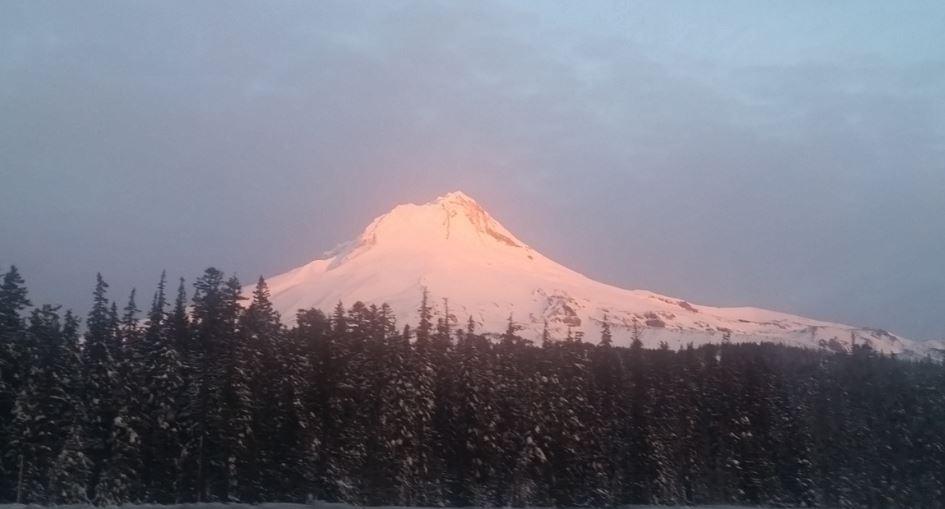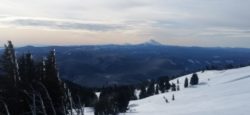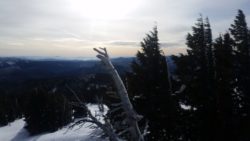
Tree Line
The snow-covered peak of Mount Hood dominates the eastern skyline of Portland in the winter. From a distance, it looks as though there is a sharp line above which trees do not grow. The elevation above which trees do not grow is called the tree line and is at about 6,000 feet on Mount Hood, or about the elevation of Timberline Lodge.

The tree line is not a sharp demarcation, but a gradual transition from forest habitat to treeless alpine habitat. The tree line elevation varies with the topography of the mountain. Snowpack lasts longer on northern faces of ridges and therefore the tree line is lower than on southern exposure ridge faces.
Trees do not grow above the tree line because the environment is too inhospitable for their survival. It is too cold for too long and too much of the moisture is frozen and unavailable to the trees. The growing season is too short for the tree to store enough energy to last the year. The lack of plants above the tree line means that there is little decaying matter to nourish the soil. The less nourishing the soil, the fewer trees can survive there.
The decreased air pressure at high altitudes also poses a challenge to trees attempting to move nutrients and water to the upper branches. Some alpine tree species have smaller vascular pathways to deal with this problem. High winds at altitude also contribute to the lack of plants that reproduce by seed, scattering the seeds far away before they germinate in place.

Within the transition zone from forest to alpine habitat, tree growth is stunted. Gnarled and twisted trees growing away from the strong prevailing winds highlight the challenge of survival near the tree line.


